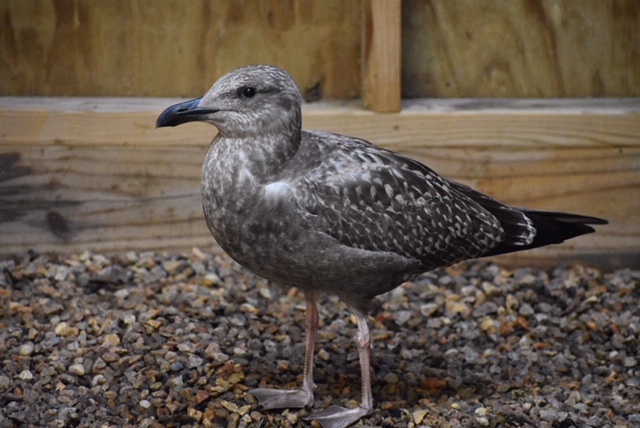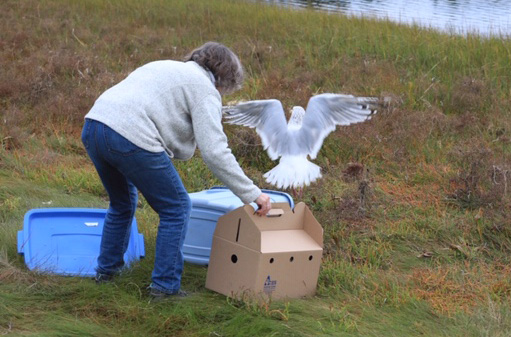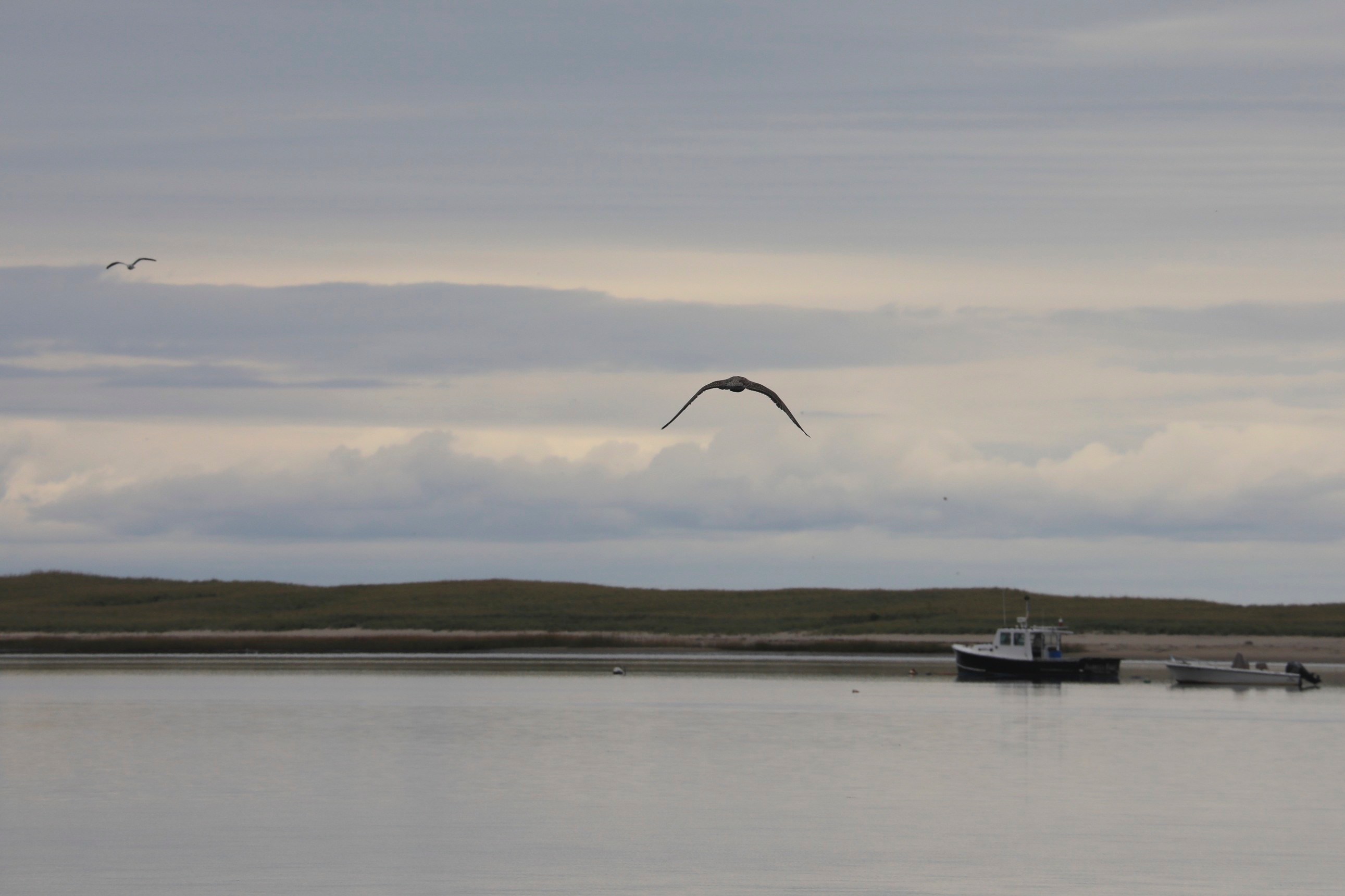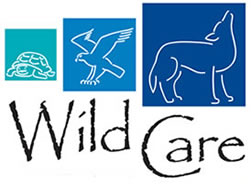
Gulls Are People Too
By Jennifer Taylor, Animal Care Coordinator
Within three days of each other, two Herring Gulls were rescued in Orleans – a juvenile from the tip of Nauset inlet Orleans, and an adult from the south side of Nauset’s Outer Beach. Both had similar symptoms – they could not stand, their wings drooped, their feathers were unkempt, they were lethargic, dehydrated and their feces were bright neon green.
The adult appeared initially to have head trauma. Because a gull’s diet consists of eating anything and everything it can find, diseases like salmonella are
common. We treat all gulls with antibiotics on admission along with taking a radiograph (x-ray) to see if they have swallowed fishing tackle or if they have been shot. Luckily, their radiographs were clear. With fluids and meds, these gulls perked up quickly and were standing and eating on their own within a few days. WOW!
Gulls are flocking birds who thrive on interaction, so it is always beneficial to their rehabilitation to have more than one gull at the same stage of recovery. We put them together in our large aviary space with a running kiddie pool, mirrors and vertical logs for perching. Thanks to a generous donation of remote video cameras, we placed a
video camera in their habitat. We watched to make sure they were getting along as they established their pecking order and competed for food, and for the highest log.
Gulls are often shunned, and spoken of as “Sea Rats” or “Dirty.” People often begin their conversation when I answer the phone at Wild Care….”I don’t know if you take sea gulls…” At Wild Care, we SO ENJOY these birds! Their personalities are incredible, and most of them are quite amiable after they understand where their food comes from— But they really DON’T like to be touched! Gulls play important roles in our ecosystem. As scavengers, they clean up our shorelines and alter nitrogen levels, impacting soil respiration in a way that can be beneficial to vegetation. They are also important bioindicators of environmental health.
After three weeks these two buddies were released together at Mill Pond in Orleans. It was the perfect spot – a calm inlet with the ocean a stone’s throw away. (Top photo by Kerry Reid. Release photos by Jennifer Taylor.)




Wild Night Out Online Auction
READY, SET, BID… We are so excited to announce that our Wild Night Out Online Auction is now live!
READ ALL NEWS
CALENDAR OF EVENTS
04 April, 2024
Wild Night Out Online Auction
EVENT DETAILS
05 April, 2024
Wild Night Out
EVENT DETAILS
28 February, 2024
Wildlife Winter/Spring Talk Series
EVENT DETAILS

DID YOU KNOW??
Wild Care has a state-of-the-art seabird therapy pool, which allows seabirds and waterfowl to exercise on running water. This will help our bird friends recover more quickly so they can get back to their watery habitats!

